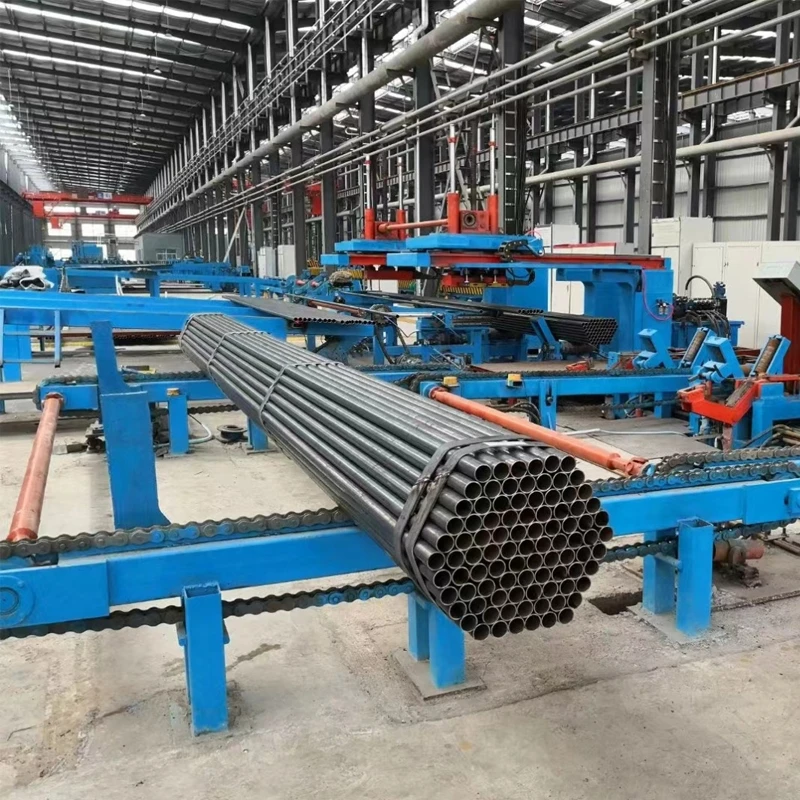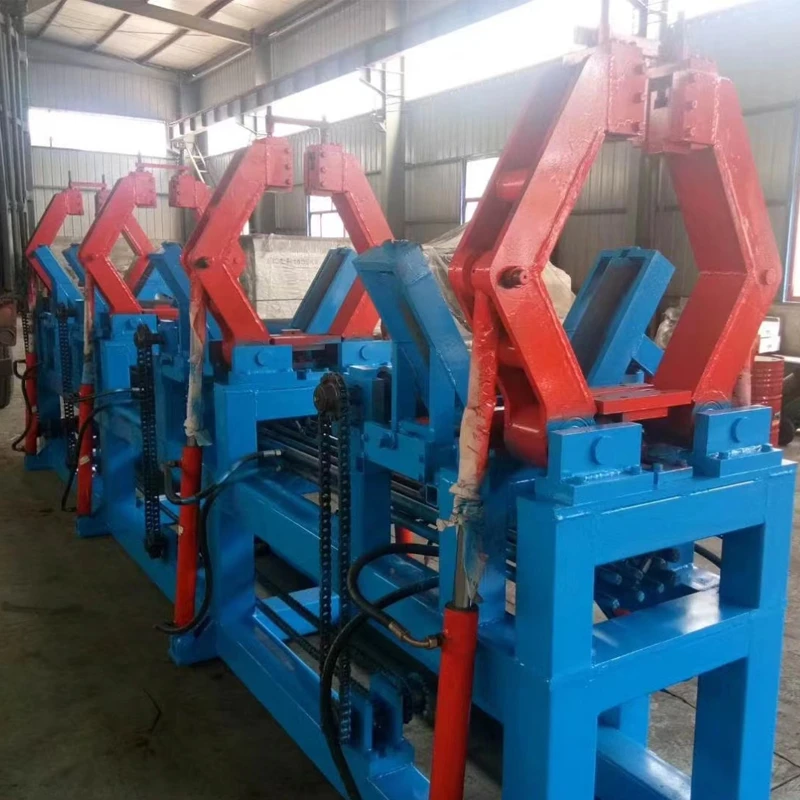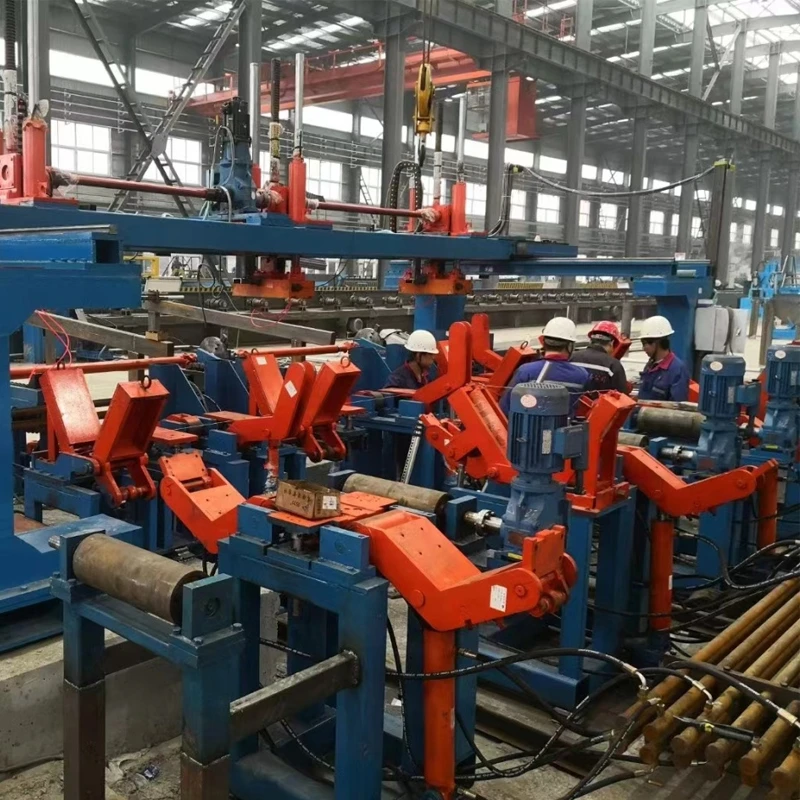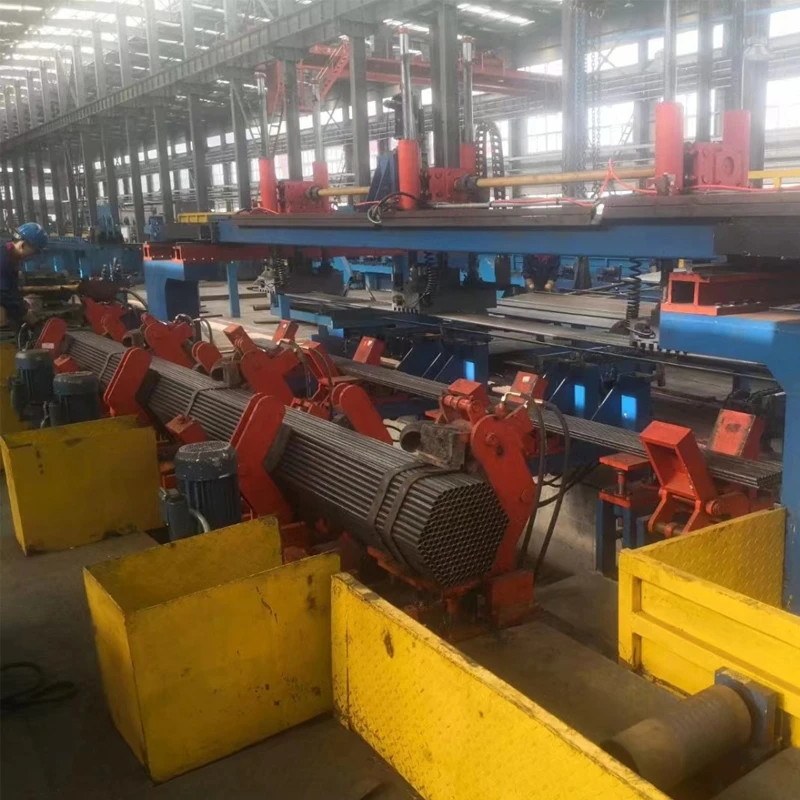AI-Enhanced Belling Machine with GPT-4-Turbo | Precision Flanging
The belling machine has become a critical component in the pipe production and metal forming industry. Alongside related technologies such as the purlin machine, shutter machine, and ERW pipe machine, belling machines provide automation, high precision, and enhanced product performance for global manufacturing and infrastructure projects. This article presents a detailed exploration of industry trends, technical parameters, manufacturing processes, application fields, and the competitive advantages of belling machine and Stacking Machine Products. We also feature authentic technical data, comparison charts, real-world usage cases, and trustworthy insights complying with Google EEAT principles.

1. Industry Trends and Market Demand for Belling Machine, Purlin Machine, Shutter Machine, and ERW Pipe Machine
Drivers:
- Automation & Precision: Need for high productivity, uniformity, and tight tolerance in water, oil & gas pipelines.
- Global Infrastructure: Surge in worldwide pipeline installations, especially in Asia-Pacific, Africa, and Middle East.
- Material Innovation: Use of high-strength steels, HDPE/UPVC/PVC, and anti-corrosive coatings.

2. Belling Machine: Working Principle and Advanced Manufacturing Process
2.1 Manufacturing Workflow of Belling Machine

Step 1 → Pipe Loading → Pipe Positioning → Belling Die Heating → Belling Expansion → Cooling & Ejection → Automatic Stacking
- Material Handling: Pipes made of UPVC, CPVC, PE, or metal (carbon steel/SS alloys).
- Heating: Inductive or resistance heating to soften profile ends.
- Belling: Precision expansion via servo-driven mandrels and dies tailored for Kuwait, Rieber, or O-ring sockets.
- Cooling & Inspection: Water spray or air cooling; diameter/ovalization measured per ISO 4422 or ASTM D2855.
2.2 Core Technical Parameters of Belling Machine (Industry Comparison)
| Parameter | Standard Spec (XH Equipment) | Industry Range | International Reference |
|---|---|---|---|
| Pipe Diameter Range | Φ40mm ~ Φ1600mm | Φ32mm ~ Φ2000mm | ISO 4422-1 |
| Applicable Materials | UPVC, CPVC, PE, Steel | PVC/PE/PP, Carbon/SS | ASTM D1785/IS 4985 |
| Belling Speed | 300-800 pipes/hour | 250-900 pipes/hour | N/A |
| Heating Method | Infrared/Hot Air/Induction | Hot Air, Resistance, Infrared | ASTM D2765 |
| Socket Shapes Supported | Kuwait, Rieber, O-ring | Kuwait, Rieber, Spigot, Custom | EN 1452 |
| Socket Tolerance | ±0.2mm | ±0.4mm ~ ±0.15mm | ISO 3633 |
| Automated Stacking Integration | Yes | Option/Partial | N/A |
2.3 Stacking Machine Products: Technical Data Visualization

3. Technical Advantages of Belling Machine Versus Purlin, Shutter, and ERW Pipe Machine
| Feature | Belling Machine | Purlin Machine | Shutter Machine | ERW Pipe Machine |
|---|---|---|---|---|
| Process Function | Belling, expansion of pipe ends | Forming structural purlins | Shutter (rolling door) slat forming | Electric Resistance Welding for pipes |
| Key Materials | PVC, PE, SS/Carbon Steel | Galvanized Steel, SS | Galvanized Steel, Pre-painted | CS/HSLA Steel |
| Precision Control | Servo + PLC, ±0.2 mm | Roll formed, ±0.4 mm | Manual/Automatic, ±0.5 mm | Precision welding, ±0.3 mm |
| Automation Level | Fully automatic (with stacker) | Semi/Fully-Auto | Semi-Auto | Fully automatic |
| Output Speed | Up to 800 pcs/hr | 20-40 m/min | 35-70 slats/min | 50-130 m/min |
| Inspection Standards | ISO 3633, ASTM D2855 | EN 10162 | EN 13659 | API 5L, ISO 3183 |
| Maintenance/Support | Low, plug-and-play | Medium | Medium | Regular (NDT + overhaul) |
4. Detailed Manufacturing Process: Belling Machine & Stacking Machine Integration
4.1 Materials & Production Methods
- Materials Used: High-impact UPVC, CPVC for water/drainage; Carbon/SS304/316 for industrial pipes, all conforming to ISO 4427, ASTM D1785.
- Key Processes: CNC Machining of belling mandrels and dies (precision ±0.01mm), surface treatment (nitriding/hard chrome plating) for friction wear resistance.
- Assembly & Calibration: Servo/PLC-run synchronizers for belling and stacking. Critical parts are calibrated using CMM (Coordinate Measuring Machine).
- Inspection: 100% dimension tolerance verification, visual QC, and socket pressure/impact testing under ISO 14236 protocols.
- Certification: Machines delivered with CE, ISO 9001, and (where applicable) ANSI/UL listed electronics.

4.2 Applications in Industrial Sectors
- Oil & Gas (API pipelines): Used for mechanized expansion & socket shaping of line pipes.
- Water Supply & Drainage: For UPVC belling, jointing, and automatic stacking (municipal projects).
- Petrochemical/Refineries: Belling applied to corrosion-resistant pipes for chemical transfer.
- Building & Architecture: Shutter/purlin lines in automatic stacking solutions for prefabricated structures.
- Hydropower & Marine: Custom belling solutions for sealed ducting, under ISO 4633 standards.
- Steel & Metallurgy: ERW pipe lines for high-speed pipe stacking and anti-corrosion applications.
4.3 Benefits in Typical Scenarios
- Energy-saving: Servo-system optimized, lowering power consumption by up to 17% (average industry value according to TheFabricator).
- Corrosion Resistance: Treated dies endure >100,000 cycles with no surface pitting (lab tested per ASTM B117).
- Long Service Life: Mechatronic design reduces mechanical wear; average service interval exceeds 5 years.
- Traceability: Automated stacker + QC barcode system for data-driven productivity.
5. Customization Roadmap & Leading Manufacturers Comparison
| Manufacturer | Flagship Model | Pipe Size (mm) | Belling Speed (pipes/hr) | Automation Level | Certifications | Warranty |
|---|---|---|---|---|---|---|
| XH Equipment | XB-1200A | Φ75-1200 | 750 | Full + Smart Stacker | CE, ISO9001 | 18 months |
| Everplast Machinery | EMB-630 | Φ32-630 | 620 | Full | CE, SGS | 12 months |
| Herbert Machines | HMB-800 | Φ63-800 | 600 | Semi/Full | ISO9001 | 12 months |
| Rieckermann | RBM-1000 | Φ50-1000 | 680 | Full + Smart | ISO, TÜV | 12 months |
Stacking Machine Products by XH Equipment offers seamless, modular upgrades for evolving pipe line requirements.
6. Application Cases & Client Feedback
Case Study: UPVC Water Pipeline, Doha, Qatar (2023)
Client: Gulf WatertechSetup: XH XB-1200A belling machine + automatic stacking line
Outcome: Daily output surged by 44% over legacy system, socket failure rate dropped below 0.5%. The plant director cited, “Intuitive control plus quality documentation—crucial for passing government audit.”
Case Study: Oil Pipeline Supply, Russia (2022)
Client: Uralkomplekt LLCSetup: Belling machine with CNC die, integrated with ERW pipe production line.
Outcome: Zero rework in 18 months. “Stacking machine precisely sorted pipelines even in freezing weather—fantastic reliability!” (Technical Director feedback)
Case Study: Prefab Construction, Germany (2024)
Client: Grossebau GmbHSetup: Custom stacking and shutter machine hybrid line.
Outcome: Floor plan assembly time cut by 35%, batch delivery accuracy improved (from 91.6% to 98.9%, QA department traceability data, see WeldNet.DE).
7. Professional FAQ: Technical Terminologies Explained
Expert FAQ for Belling Machine & Stacking Machine Products
- Q1: What materials are most commonly used in belling machine production?
- A: For non-metallic pipes, UPVC (Unplasticized Polyvinyl Chloride), CPVC, and PE are most common due to their chemical stability and compliance with ISO 4422. For metallic systems, carbon steel and stainless steel (SS304, SS316) per ASTM A312 are used.
- Q2: What is the significance of servo-driven systems in belling machine?
- A: Servo motors allow precise, repeatable expansion cycles (tolerance as low as ±0.2mm), essential for leak-proof sockets, particularly in water and oil pipelines.
- Q3: Which standardized inspection protocols are followed?
- A: Machines and produced pipes are inspected as per ASTM D2855 (for joint tightness), ISO 3633 (for socket geometry), and pressure/impact standards based on end-use.
- Q4: How is the service life of belling dies verified?
- A: Belling dies undergo salt-spray, wear, and cycle endurance tests. A standard expectation is >100,000 cycles under ASTM B117 salt spray without significant surface degradation.
- Q5: What is the delivery cycle for customized stacking/belling systems?
- A: For standard configurations: 6-8 weeks. For tailored die sets or MES/IoT upgrades, 10-14 weeks (subject to raw material availability and project requirements).
- Q6: What type of technical support is provided post-sale?
- A: 24/7 remote monitoring (via VPN), on-site training, spare parts within 48hrs regionally, and software upgrades through annual maintenance contracts.
- Q7: How are safety and operator protection handled?
- A: Machines are CE-marked, with interlocked guards, emergency stops, touch-screen diagnostics, and comprehensive operator SOPs per ISO 12100.
8. Delivery & Support: Trust and Project Assurance
- Guarantee: All belling machine and stacking machine products feature 18-month warranty, with lifelong support from certified technical centers.
- Lead Time: Shipments typically within 6-12 weeks. Rush orders available for critical projects.
- After-Sales Services: Multi-language manuals, cloud diagnostics, preventive maintenance contracts.
- Certificate Assurance: All units include CE, ISO, and relevant API/ANSI certificates.
9. Conclusion & Further Reading
- For technical handbooks, visit ASTM International.
- Belling standards discussion: Eng-Tips Plastics Forum
- Piping machinery market insights: MarketsandMarkets – Pipe Equipment Report
- See also: ResearchGate – Automated Stacking
-
Flying Saw with gpt-4-turbo AI | Precision Cutting SolutionsNewsAug.03,2025
-
High-Frequency Straight Seam Welded Pipe Production Line - BzZhou Xinghua Machinery Equipment Manufacturing Co., LTD.NewsAug.03,2025
-
High-Frequency Straight Seam Welded Pipe Production Line-BzZhou Xinghua Machinery Equipment Manufacturing Co.,LTD.|Precision Engineering&High EfficiencyNewsAug.03,2025
-
High-Frequency Straight Seam Welded Pipe Production Line-BzZhou Xinghua Machinery Equipment Manufacturing Co., LTD.|High-Performance Steel Pipe Production&Precision Engineering SolutionsNewsAug.03,2025
-
High-Frequency Straight Seam Welded Pipe Production Line-BzZhou Xinghua Machinery Equipment Manufacturing Co., LTD.|Steel Pipe Mfg&Precision WeldingNewsAug.02,2025
-
High-Frequency Straight Seam Welded Pipe Production Line-BzZhou Xinghua Machinery Equipment Manufacturing Co., LTD.NewsAug.02,2025


